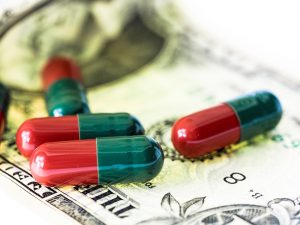 Two recently published analyses are providing a more in-depth picture of prescription drug spending in the United States. Such evaluations illustrate the complexities facing policy makers and regulators seeking to help reduce patient and payer drug costs. In addition, they point to somewhat hidden issues regarding the pricing and reimbursement of generic drugs that can lead to higher costs for governmental and private health plans.
Two recently published analyses are providing a more in-depth picture of prescription drug spending in the United States. Such evaluations illustrate the complexities facing policy makers and regulators seeking to help reduce patient and payer drug costs. In addition, they point to somewhat hidden issues regarding the pricing and reimbursement of generic drugs that can lead to higher costs for governmental and private health plans.
The first study, a peer-reviewed article published in the journal Health Affairs, estimates the revenues associated with prescription drugs at each step of the supply chain, from manufacturer to patient, and allocates the total amount of drug spending among the various drug purchasers and payers.
Prior analyses have suffered from inconsistencies in the data collected, resulting in varying estimates of U.S. drug spending from a low of $323 billion (Analyst firm IQVIA) to a high of $477 billion (The office of the Health and Human Services Assistant Secretary for Planning and Evaluation, or ASPE).
According to the new publication, the estimated total expenditure on drugs in 2016 was $480 billion. That figure represents approximately 15% of total U.S. healthcare spending — rather than the often cited 10%, which according to the authors leaves out the profits realized by the non-retail markets and middlemen. Of this $480 billion, approximately 2/3 is captured by drug manufacturers as net revenues. The remaining third goes to supply chain intermediaries: retail and specialty pharmacies ($73 billion, or ~15%); healthcare providers, including hospitals and doctors’ offices– ($35 billion, or ~7.3%); pharmacy benefit managers (PBMs) and drug wholesalers ($23 billion, or ~4.8%, and $18 billion, or ~3.8%, respectively); and insurers ($8.6 billion, or ~1.8%).
The second analysis, the result of investigative reporting at Bloomberg, shines a spotlight on the practice of “spread pricing.” Spread pricing refers to the difference between the amount that a PBM reimburses a pharmacy for a drug and the amount that they charge their payer client, generally a Medicaid managed care plan or employer-supported health plan. This practice can result in very high profits for PBMs on certain drugs, typically otherwise low-cost generics. Such spreads vary but can be as high as thousands of percent mark-up to the payer, leading to high costs to payers and high profits to the PBMs.
The Bloomberg reporters looked at the prices of 90 best-selling generic drugs (including over 500 dosages and formulations) used by Medicaid managed care plans. They found that, in 2017, PBMs and pharmacies accrued approximately $1.3 billion of the $4.26 billion that Medicaid insurers spent on those therapeutics. The biggest mark-ups were on newer generic drugs, such as generic versions of the leukemia treatment Gleevec, where mark-ups were as high as $3,000 per prescription. While Bloomberg’s analysis doesn’t distinguish between the amount going to pharmacies and to PBMs, independent pharmacists say they aren’t realizing much of that added cost.
PBMs have fought to keep the drug price spreads out of the public eye. For example, CVS sued Ohio to prevent the release of a report detailing the spread it received from Medicaid programs in that state. The state’s analysis showed that hidden fees to Ohio due to spread pricing by CVS approximated $223.7 million over a 12-month period, with per-prescription mark-ups averaging $6.14 to just under $8 in 2017 and early 2018. Indiana, the state where mark-ups were highest according to the Bloomberg report, saw generic drug mark-ups averaging over $13 per prescription in 2017, nearly all of that going to the PBMs.
PBMs say that governments and employers have a choice about using spread-pricing or fee-based arrangements. According to Express Scripts, many drug plans choose spread-pricing for the predictability that it offers, rather than worrying about costs varying from pharmacy to pharmacy.
However, pressure may be growing for a change in such pricing practices. In July 2017, Bloomberg reported that West Virginia cut out PBMs, including Express Scripts and CVS, from its Medicaid managed program. By running the program, the state expects to save around $30 million per year or about 4% of the state’s Medicaid drug spending.
Many players are contributing to the ultimate cost of drugs. Given the complexity of the drug pricing pathway, where should price lowering efforts focus? And is the practice of spread pricing a significant part of the drug cost problem? If so, what can be done to reduce its impact on drug spending in the United States?